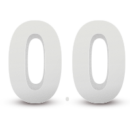Many different economic reports and indicators are released throughout the year, and these can significantly impact the Forex market. Forex is a truly global market, with buyers and sellers worldwide trading trillions of dollars daily. In this article, we will discuss some key economic data points for the forex market and delve into them in more detail.

Inflation:
Inflation is released almost monthly in most countries and stands as one of the most crucial indicators in the forex market. High rates of inflation lead to a decline in the value of money, often reducing consumer purchasing power and resulting in a decline in living standards. It is often observed that high inflation weakens the currency, suppresses investment, and consequently has a negative impact on the exchange rate. Conversely, when inflation is low, the currency strengthens, having a positive effect on the exchange rate.
Unemployment Rate:
The unemployment rate is the percentage of the labor force without a job. When the economy is in bad shape and there are no jobs, the unemployment rate can be expected to increase. Conversely, when the economy grows at a healthy rate and jobs are relatively abundant, a decline in the unemployment rate can be anticipated. For Forex traders, understanding the nuances of the unemployment rate is a key economic indicator that can be useful in making strategic decisions in the complex landscape of the currency market.
Trade Balance:
The trade balance is the difference between the total value of exports and imports. It is a key economic indicator that provides information about the performance of any country in international trade. A positive trade balance indicates that a country is exporting more goods than it is importing, while a negative trade balance indicates that a country is importing more goods than it is exporting.
Purchasing Managers’ Index
The Purchasing Managers’ Index™ (PMI™) is a survey-based indicator of business conditions, including individual measures (‘sub-indices’) of business new orders, costs, sales prices, exports, employment, output, purchasing activity, and business conditions.
You can also understand this from the formula
PMI = (P1 * 1) + (P2 * 0.5) + (P3 * 0)
P1 = percentage of answers reporting an improvement
P2 = percentage of answers reporting no change
P3 = percentage of answers reporting a deterioration
Global PMI data for manufacturing and services are calculated by adding together country indices using national manufacturing and services GDP weights (annual value added). Global composite PMI data are calculated by adding comparable global manufacturing and services indices using the annual value added of global manufacturing and services.
Business Confidence
Business Confidence is an opinion-based survey that assesses business conditions. Different countries may use different methods, but the indicator provides information about current and expected business conditions. This business confidence indicator provides information about future developments in the industry sector based on opinion surveys on the growth of production, orders, and finished goods stocks. It can be used to monitor an increase in production. If business confidence is at its highest level in the year, the market will take it as positive for the currency, as greater confidence points towards the growth and expansion of an economy.
Consumer Confidence
The Consumer Confidence Index (CCI) is a survey administered by the Conference Board that measures how optimistic or pessimistic consumers are about their expected financial situation. An indicator above 100 indicates an increase in consumers’ confidence in the future economic situation, while a value below 100 indicates a pessimistic attitude toward future growth in the economy.
Coincident Economic Indicators
A contraction indicator is a metric that reflects the state of economic activity within a particular region. A coincident indicator is distinct from both a leading indicator, which reflects changes in economic conditions that have already occurred, and a lagging indicator, which reflects changes that have already occurred in the general economic trend.
Gross Domestic Product
Examining the growth rate of GDP provides valuable insight into the performance of the economy. It is released quarterly, with preliminary data from countries such as the US and the Eurozone providing a snapshot of economic health. The GDP growth rate reflects fluctuations in gross domestic product, indicating whether the economy is accelerating or slowing down. A boom signifies strong growth, while a downturn indicates a recession. This metric focuses on the value of goods and services without considering their nature. In particular, unhealthy lifestyle expenditures or increased energy costs may impact the results. Despite these limitations, GDP remains important for detecting recessions. Traditionally, negative growth for two consecutive quarters indicates an economic recession.
Retail Sales
Retail sales are a key economic metric that tracks consumer demand for finished goods. Retail sales measure the buying and selling of non-durable goods over a certain time period. This figure is an important dataset because it is a major monthly market-moving event. This data tracks consumer spending habits and provides information about whether economic activity is improving or worsening. Therefore, the value of the currency increases when retail sales increase; conversely, if the trade balance is negative, the value of the currency may decrease.
Personal consumption and expenditure (PCE)
Personal consumption expenditure (PCE) in the US reflects consumer spending habits on goods and services. PCE is used to measure what percentage of households’ earned income is being spent on the consumption of various goods and services. Personal consumption expenditure, or PCE, allows economists to see how well the economy is doing from month to month.
Economic indicators like inflation, trade balance, unemployment rate, leading economic indicators, purchasing managers index, consumer confidence, business confidence, macroeconomic indicators, gross domestic product, retail sales, personal consumption, and expenditure (PCE) show their impact in the Forex market. So, if you are thinking about being successful in the forex market, then you cannot ignore these.
No single key indicator gives a complete picture of the state of the economy; however, combinations of indicators can be used to inform a variety of economic and investment decisions.







